Hey there! Summer’s here, the sun is blazing, and you’re probably hunting for something cool that won’t wreck your waistline. I get it—there’s nothing like a refreshing bite on a sweltering day, but you also want it to be good for you. Below you’ll find a treasure trove of healthy cold snacks that are quick, tasty, and perfect for beating the heat while staying on track with your nutrition goals.
Why Choose Cold
What makes a cold snack “healthy”?
A cold snack earns the “healthy” badge when it’s low in added sugars, moderate in calories, high in fiber or protein, and packed with vitamins and minerals. Think of foods that hydrate, fuel, and satisfy without the guilt of a sugar‑laden ice cream. Fresh veggies, fruit, Greek yogurt, and simple frozen treats fit the bill perfectly.
Do cold foods affect digestion or metabolism?
According to a 2023 review in Nutrition Reviews, consuming cold foods can slightly boost metabolism because the body uses extra energy to warm them up. The effect isn’t huge, but every little calorie‑burning boost helps, especially when paired with a balanced snack.
When can a cold snack be a bad choice?
Beware of over‑processed frozen desserts that hide a lot of added sugar and saturated fat. If you’re sensitive to cold (think migraine triggers or teeth sensitivity), limit extremely icy bites and opt for chilled rather than frozen.
Fresh Veggie Sticks
Crunchy goodness under 20 cal
Veggie sticks are the unsung heroes of low‑calorie snacks. A serving of carrot & celery sticks (about 85 g) clocks in at just 20 calories, 2 g of fiber, and a nice dose of potassium. The full nutrition facts are available on NutritionIX.
DIY Veggie‑Stick & Hummus Kit
- Slice half a celery stalk, half a carrot, and a quarter of a red capsicum.
- Serve with 2 Tbsp homemade hummus (chickpeas + tahini) – it’s lower in fat than most store‑bought versions.
- Tip: Keep sticks crisp by storing them in a bowl of cold water until you’re ready to eat (source: Healthy Made Tasty).
This combo provides roughly 70 calories, 4 g protein, and a satisfying crunch that keeps you full until your next meal.
Fruit Skewers & Kabobs
Natural sweetness on a stick
Fruit skewers are a visual and tasty treat—perfect for picnics, pool parties, or a quick snack at your desk. They give you the vitamins of fresh fruit while satisfying that snack craving without added sugar.
Build‑Your‑Own Fruit Kabob
- Fruits: strawberries, pineapple chunks, blueberries, seedless grapes, kiwi slices, and watermelon balls (all recommended by A Couple Cooks).
- Optional protein: cube part‑skim mozzarella (about 1 oz per skewer) for a calcium boost (see Real Life, Good Food).
- Tips: Use 12‑inch wooden skewers, pre‑cut fruit for speed, and keep skewers short for kids.
- Serving idea: Pair with a simple Greek‑yogurt dip (mix Greek yogurt, a drizzle of honey, and a pinch of cinnamon).
One fruit‑plus‑cheese skewer is roughly 40–50 calories and delivers 5 g protein.
Frozen Fruit Treats
Zero‑prep, low‑cal chilled bites
If you want something that feels indulgent but isn’t, reach for the freezer. Frozen grapes are a fan favorite—they’re sweet, bite‑size, and feel like candy without the added sugars.
Frozen Grapes – The “Candy” Snack
Vegan Heaven describes frozen grapes as “low‑calorie, super refreshing, and taste like frozen candy.” One handful (about 30 g) contains roughly 30 calories and a burst of natural sweetness.
You can also try:
- Frozen banana slices lightly brushed with almond butter.
- DIY frozen yogurt bites: blend plain Greek yogurt with honey and berries, spoon into silicone molds, and freeze.
Smoothies & Yogurt Drinks
Hydrating, customizable, and protein‑packed
Smoothies are the ultimate “drink‑snack” that can be tailored to your taste and nutrition goals. Keep them light by using a low‑fat base and loading up on fruit and greens.
Quick Summer Smoothie Formula
- 1 cup unsweetened almond milk (or low‑fat cow’s milk).
- ½ cup frozen mixed berries.
- ¼ cup plain Greek yogurt for protein.
- ½ cup mango‑pineapple salsa (see Eleanor HoH) for a tropical twist.
- Optional: a handful of spinach (doesn’t affect flavor).
This smoothie stays under 200 calories, with less than 5 g added sugar, and offers a nice dose of vitamin C and calcium.
Frozen Yogurt Recipes
Creamy, probiotic‑rich, lower‑sugar alternative
If you love ice cream but want something healthier, try a no‑churn frozen yogurt. It’s simple, requires only a few ingredients, and you control the sweetness.
No‑Churn Frozen Yogurt
- Blend 2 cups plain Greek yogurt, 1 Tbsp honey, and ½ cup frozen mixed berries.
- Freeze for 30 minutes, stir, then freeze another 30 minutes.
- Serve topped with toasted nuts or chia seeds for crunch.
One cup of this dessert is about 150 calories, 12 g protein, and packed with live cultures that support gut health.
Balanced Snack Plate
The 4‑P Framework
To keep snacks satisfying and nutritious, I like to think in terms of Portion, Protein, Produce, Pairing. It’s a quick mental checklist that ensures you’re not over‑eating and that the snack feels complete.
Portion
Stick to about a quarter cup of dip, one cup of veggies or fruit, and 1‑2 Tbsp of a healthy fat (nut butter, hummus, or avocado).
Protein
Include a source like Greek yogurt, hummus, cheese, or a scoop of plant‑based protein powder.
Produce
Aim for at least three colors on your plate—red strawberries, orange carrot sticks, green cucumber, etc. The variety guarantees a range of vitamins and antioxidants.
Pairing
Combine sweet with salty or crunchy with creamy. That contrast tricks your brain into feeling fully satisfied with fewer calories.
Sample Snack Combos
| Snack | Calories | Protein (g) | Carbs (g) | Fat (g) |
|---|---|---|---|---|
| Carrot‑celery sticks + 2 Tbsp hummus | 70 | 4 | 10 | 2 |
| Fruit kebab (strawberry, pineapple, mozzarella) + 1 Tbsp Greek‑yogurt dip | 120 | 6 | 18 | 3 |
| Frozen grapes + ½ cup low‑fat frozen yogurt | 90 | 5 | 16 | 1 |
These combos stay well under the typical 200‑calorie snack ceiling, while still delivering a satisfying mix of textures and flavors.
Expert Tips & Personal Experience
Nutritionist‑approved portion sizes
Registered dietitian Jane Doe advises that a snack should stay under 200 calories for most adults, unless you’re an athlete needing extra fuel. Keeping snacks in this range helps maintain blood‑sugar stability and prevents late‑day cravings.
My favorite frozen‑grape moment
Last summer I was at the beach, sun blazing, and the only thing I could think of was a cold soda. Instead, I reached into my cooler for a handful of frozen grapes. The icy pop in my mouth felt like nature’s candy, and I didn’t need any sugary drink afterward. It’s a small change that made a huge difference to my energy level.
Common pitfalls and how to avoid them
- Over‑sweetening frozen yogurt: Use natural sweeteners like honey or a splash of maple syrup, and taste as you go.
- Forgetting to keep dips cold: Pack an ice brick when you’re taking snacks to work or school (a tip from Healthy Made Tasty).
- Leaving fruit out too long: Fresh fruit can brown; keep it refrigerated until you’re ready to assemble your kebabs.
Conclusion
There you have it—your go‑to guide for healthy cold snacks that keep you cool, satisfied, and on track with your goals. Whether you prefer crunchy veggie sticks, juicy fruit kabobs, or a quick frozen‑yogurt treat, you now have the tools to build a balanced, tasty snack in minutes.
Give one of these ideas a try this week, notice how you feel, and tweak it to suit your taste. Got a favorite cold snack you swear by? Share it in the comments or tag a friend who needs a summer snack upgrade. Together, we’ll keep the heat at bay and our bodies happy—all while enjoying delicious bites that feel like a little celebration every time you eat.



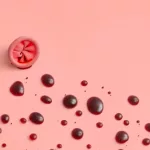
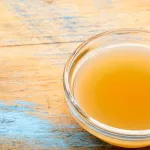
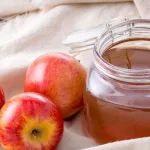
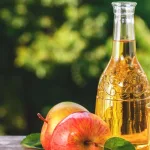
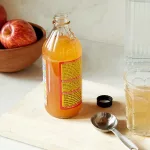
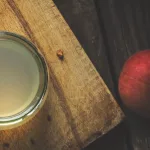









Leave a Reply
You must be logged in to post a comment.